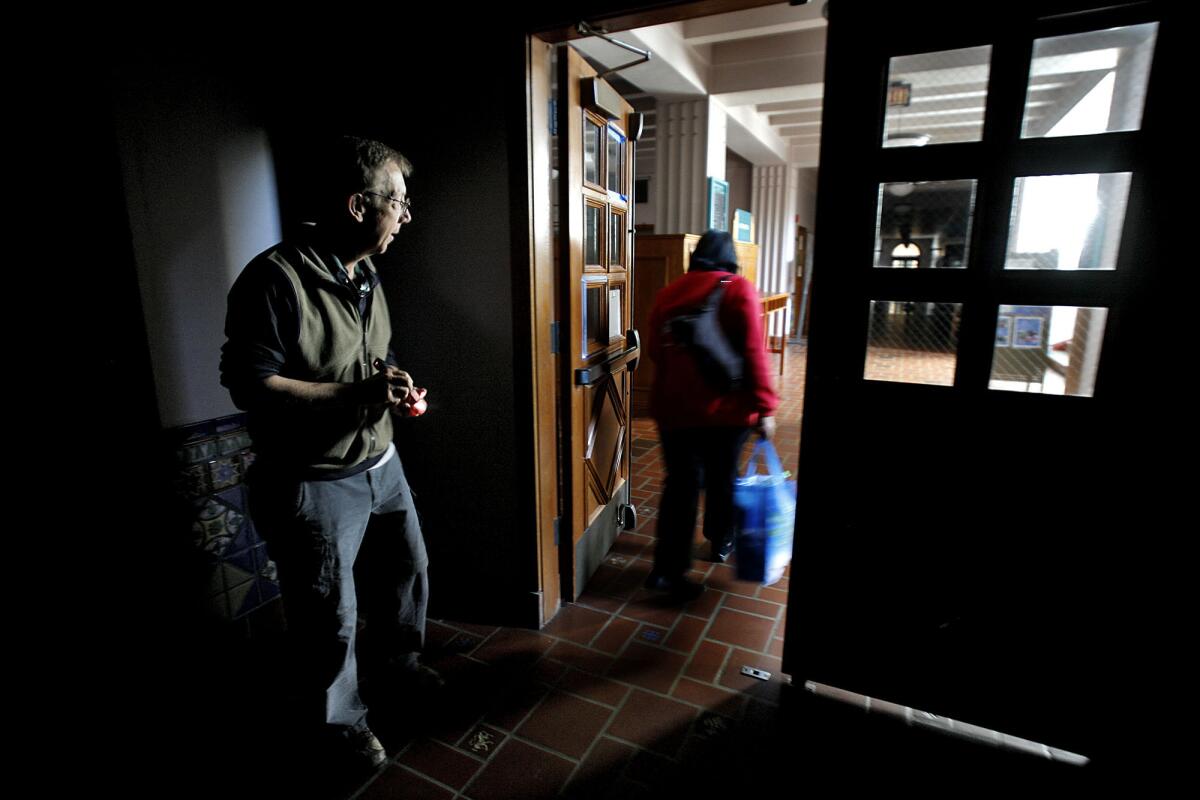Rolling power outages in Glendale that lasted days were caused by a transformer explosion, officials say

When Scott Lowe returned to his home in Glendale’s Monterey Corridor on Friday, all of the lights were off. Clocks were blinking or stopped.
A walk around the neighborhood with his fiancée was “completely bathed in darkness,” he said.
Lowe was experiencing one of the several forced power outages implemented by Glendale Water & Power that began this past Wednesday and lasted into the weekend.
According to utility officials, Glendale Water & Power “had no choice” but to implement rolling blackouts to protect its already compromised equipment as temperatures soared into the low 100s last week and over-strained its system.
Without taking the measure, the city could have experienced “a total blackout of our power system,” according to a tweet from the utility on Friday.
An outage Wednesday that left thousands of Glendale residents without electricity was caused by an overheated transformer that exploded, officials say.
A transformer explosion at the utility’s Rossmoyne substation in July — which caused a power outage at the time — put additional strain on other substations where customers had been rerouted, according to a statement released by Glendale Water & Power on Monday evening.
A cable that had been replaced just one month prior to the explosion melted as a result of the elevated power passing through it. Typically, that type of cable would last 30 years, according to the statement.
“In general … we strive to balance our load with our resources,” Darrell Hahn, an electrical services administrator with the utility, said during a Glendale Water & Power Commission meeting this past Thursday.
“At times some of our equipment — transformers, transmission lines — they may get overheated in the extreme heat,” he added.
Blackouts were instituted for one-hour increments in three impacted areas, according to the statement. Some people experienced multiple one-hour blackouts within a day, according to the utility’s Twitter page.
“It helps to reduce the load. It helps to reduce the strain on the equipment,” Hahn said of the planned outages during the Thursday meeting.
By Sunday afternoon, the utility posted on its Twitter page that it had stopped the planned outages.
Crews have replaced the damaged cable and rerouted power lines to increase capacity, according to the utility.
The system is designed with redundancies, so if one component fails, there is usually a backup. However, the multiple simultaneous damages and intense weather conditions created an unforeseen emergency situation, according to the utility’s statement.
“It was without question an unprecedented action that we were forced to take,” according to the utility’s statement.
Before the statement arrived, about five days after the blackouts began, people took to speculation on Facebook and Nextdoor, Lowe said.
Some blamed new apartment development for putting too much strain on the system and others called for an expansion of the local power plant.
According to Glendale city spokeswoman Eliza Papazian, the city plans for increased demand by building new infrastructure. The outages were not related to the utility’s power supply, she added.
“The latest [statement] is good because it actually explains what’s happening,” Lowe said. “It’s detailed, but I feel like it should be detailed because it’s a really bad event.”
As of Sunday, utility officials said they were still working on fully repairing the damaged transformer. Equipment has been shipped and it should be fixed in about two weeks, Papazian said in an email.
The specific damaged equipment that led to the forced outages has already been repaired, so blackouts will not be ordered if temperatures spike again, Papazian said.
Customers who think they were injured or incurred property damage as a result of the outages can file a claim for damages online or request the forms through the City Clerk’s office, she added.

